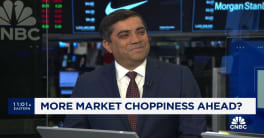Fannie Mae's economists expect the economy to strengthen in 2015 and that will "drag" housing into a better cycle this year. The company's forecast for the year includes a moderate acceleration of economic growth, "driven by strengthening private domestic demand, especially consumer spending, amid continued low gasoline prices, firming labor market conditions, rising household net worth through both financial and housing wealth, improving consumer and business confidence, and reduced fiscal headwinds." They project growth will accelerate from their estimate of 2.6 percent in 2014 to 3.1 percent in 2015. This stronger climate "should lead to improving income prospects, underpinning a higher rate of household formation in 2015."
Fannie Mae's Economic Strategic Research Team, led by Doug Duncan, Senior Vice President and Chief Economist, note that housing, which in the past has been an early driver of economic expansion has not acted as such in the current cycle, instead lagging the progress of the overall economy. Now they say that the strength of the economy accompanied by an easing of lending standards and some meaningful income growth "should drag housing upward" and that 2015 will mark a year of a moderate improvement in broad-based housing activity following a disappointing and uneven year for the housing recovery in 2014.
Of course there are caveats. That expected income growth may take a while to arrive; there is uncertainty about the timing of monetary policy returning to normal, and the rest of the world is always a cause for concern; slowing global growth, continued unrest throughout the world and renewed concerns about Greece and the Eurozone.
Like Freddie Mac's economists, Fannie Mae's note that the collapse in oil prices was one of the big surprises of 2014. Along with the strengthening of the dollar to decades-high levels and the softening of other commodity prices, disinflationary pressures seem to have contributed to the bond rally and the resulting drop in interest rates.
With upward pressure remaining muted, inflation has moved well below the Federal Reserve's 2.0 percent target. This, along with lackluster growth, appears to justify a cautious pace on the part of the Fed in raising rates. After the December meeting of the Open Market Committee the Fed noted it would be patient in normalizing rates but they also appear to view the drop in oil prices and the stronger dollar as holding inflation off only temporarily. Many Fed officials have also noted that the improvement in the unemployment rate has overstated improvement in the jobs market.
The forecast is for a hike in the target fed funds rate in the third quarter with gradual tightening through the end of 2016. "The yield curve should flatten further as short-term rates rise while longer- term rates will likely remain well-anchored," the economists say.
While they expect the economy will boost housing this year, they remain cautious based on the aforementioned slow pace of the income growth. They quote the December National Housing Survey which showed a strengthening of attitudes toward the economy and personal finances while housing sentiment remained flat.
Housing activity softened toward the end of the year with existing home sales down sharply and new home sales the weakest since July. Single family permits and constructions starts fell, home builder confidence dipped in December and housing will probably turn out to be a "meager" contributor to growth in 2014.
Near-term prospects don't look much better with November Pending Sales up only slightly in November, not boding well for sales over the following few months. The Mortgage Bankers Association mortgage Purchase Index hits its lowest level in December since 1995 although it did bounce back at the beginning of 2015.
Conditions for homebuying however are favorable with interest rates down to May 2013 levels, credit standards apparently easing and a probable boost coming from new Federal Housing Finance Agency rules on mortgage put backs, new low down payment levels for conventional mortgages and a rollback of FHA annual premiums.
On the downside, more first-time buyers will be needed to offset the pullback of investors as foreclosures and short sales ebb, and declining oil prices may hurt some local housing markets in energy areas like North Dakota and Texas. The forecast notes that homes prices dropped nearly 15 percent in Texas between 1986 and 1988 after oil prices fell 50 percent at the beginning of that period.
To sum up their expectations the economists say they have only a cautious view of homebuilding based on both supply constraints including available labor and demand constraints from low levels of household formation. They expect housing starts to increase nearly 20 percent to 1.16 million units - the historic average is 1.50 million - and total home sales to increase 6.0 percent to 5.66 million units, the best performance since 2007. Both refinancing and total origination estimates have been upgraded based on lower interest rates. After dropping nearly 37 percent in 2014 to $1.17 trillion total originations in 2015 will edge up to $1.18 trillion with an increase in purchasing offsetting a decline in refinancing which is expected to slip from an estimated 43 percent share last year to 41 percent. Total single-family mortgage debt will be flat in 2015 but will strengthen going forward.







